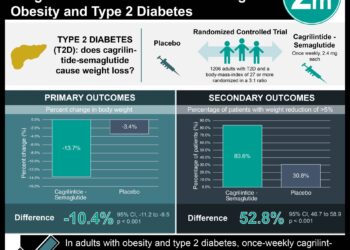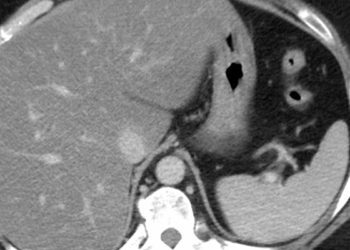USPSTF recommends screening for gestational diabetes
Image: PD
1. The U.S. Preventive Services Task Force (USPSTF), in an updated 2014 statement, recommends screening for gestational diabetes mellitus (GDM) in asymptomatic pregnant woman after 24 weeks of gestation.
2. There is insufficient evidence for screening for GDM before 24 weeks of gestation.
Evidence Rating Level: 1 (Excellent)
Study Rundown: Gestational diabetes mellitus (GDM) is a known risk factor for multiple maternal and fetal complications. In their last 2008 recommendation statement, the USPSTF concluded that there was insufficient evidence at that time to assess the benefits or harms of GDM screening before or after 24 weeks of gestation. Although a review of the most recent evidence involved no randomized control trials that addressed directly the outcomes of screening for GDM, there was good evidence to show moderate benefit of treating GDM at or after 24 weeks. All the reviewed studies compared usual care with diet modification, glucose monitoring and insulin as needed for patients with screen-detected GDM. The benefits shown in these studies include a reduced risk of preeclampsia, shoulder dystocia and fetal macrosomia. As a result of this evidence, this year the USPSTF has changed their statement to recommend the screening for GDM after 24 weeks of gestation. However, at this point, there is currently insufficient evidence for earlier screening before 24 weeks. Further studies will be required to investigate the possible benefits for earlier screening.
Click to read the study, published today in the Annals of Internal Medicine
Relevant Reading: Effect of Treatment of Gestational Diabetes Mellitus on Pregnancy Outcomes
In-Depth [systematic review]: USPSTF reviewed all literature pertaining to the effectiveness of early detection and treatment of GDM. No RCTs directly addressed the outcomes of screening for GDM. However, there were five fair-good RCTs and 6 retrospective cohort studies that investigated the benefits or harms of treatment compared to usual care of mild screen detected GDM at or after 24 weeks of gestation. All the reviewed studies compared usual care with diet modification, glucose monitoring and insulin as needed. The overall evidence was strongly influenced by two large RCTs: the Mild GDM Trial and the Australian Carbohydrate Intolerance in Pregnancy Study (ACHOIS). The studies showed that treatment of GDM was associated with fewer cases of preeclampsia (3 RCTs, n =2014), shoulder dystocia (3 RCTs and 4 cohort studies, n =3054) and macrosomia (5 RCTs, n=2643). ACHOIS also showed significantly lower rates of maternal depression at 3 months post partum associated with treatment of GDM, although rates of maternal anxiety were similar between groups. The review also noted two small RCTs addressing long-term outcomes for children of mothers with GDM (7-11 years follow up). These studies showed no significant difference in body mass index (BMI), impaired glucose tolerance or type II diabetes mellitus for children of mothers with GDM who received treatment versus those who received usual care.
By Aimee Li, MD and Andrew Cheung, MD
© 2012-14 2minutemedicine.com. All rights reserved. No works may be reproduced without expressed written consent from 2minutemedicine.com. Disclaimer: We present factual information directly from peer reviewed medical journals. No post should be construed as medical advice and is not intended as such by the authors, editors, staff or by 2minutemedicine.com. PLEASE SEE A HEALTHCARE PROVIDER IN YOUR AREA IF YOU SEEK MEDICAL ADVICE OF ANY SORT.







